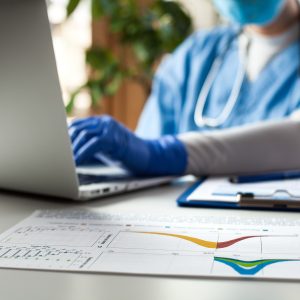Estimated reading time: 2 minutes
The Pandemic has pushed Healthcare officials to pursue research partnerships and engage in data sharing opportunities. The Healthcare industry is essentially a large machine that has presented itself as working to achieve the goals of quality care, lower coasts, and improved outcomes for all. When it comes to data though, things are always more complicated, however. Whether a pharmaceutical company or a research institution conduct efforts on disparate digital systems, it’s often seen as difficult to access specific data points, even though there is still a need to come to find actionable decisions. Regulations and privacy-governed walls that are set in place can also complicate the equation. A Healthcare system that isn’t centralized does in fact mean that the data will also no be centralized.
Tracking COVID-19 Data
Recognizing signs and symptoms of the virus, tracking and tracing cases, and monitoring the availability of medical resources, staff and researchers are overwhelmed with the process and the huge wave incoming information. It’s just too much for humans to comprehend alone. AI can also come into the picture in this situation.  AI can eliminate false leads and close in on potential outlets. Researchers can narrow things down quicker, instead of running through thousands of trials. The key is to evaluate the effects of COVID-19 interventions for people around the world.
AI can eliminate false leads and close in on potential outlets. Researchers can narrow things down quicker, instead of running through thousands of trials. The key is to evaluate the effects of COVID-19 interventions for people around the world.
Leave it to social media to help researchers get to the bottom of patient reactions and thoughts. Medical professionals will ask themselves, what they can extract from social media sites to assist in quality assurance and so much more. Another valid step involves mining through scientific journals and case studies. What can staff members learn from what’s already been researched and published? The Healthcare Industry is continually developing new approaches to help reduce the spread and mitigate potential long-term effects of the virus, both mentally and physically, thanks to real-world data in the spotlight. In this instance, researchers are revisiting advanced analytics, visualization tools, and data driven methods to facilitate improved care now and in the future.
So What Defines Real-Time Data?
Using Real-time data, clinicians are able to gain a better sense of patients and their needs, as well as understanding the resources to deliver the best, optimal care. In return, real-time data can generate a sense of value, protect patients, and  efficiently move patients through the system, if necessary. Data also helps doctors to compare rates of hospitalization and death in both affluent and lower income areas, as well as its ability to monitor patterns in demographics, lab results, and various bio-specimen.
efficiently move patients through the system, if necessary. Data also helps doctors to compare rates of hospitalization and death in both affluent and lower income areas, as well as its ability to monitor patterns in demographics, lab results, and various bio-specimen.
Now, there is never any absolute guarantee that this data will be fully accurate, at all times, for there such issues have been heightened significantly. Leaders in charge will need to update the data, in every instance, to make the best decisions. COVID-19 has brought the importance of accurate real-world/real-time data to the center stage, especially when it comes to recording and reporting the number of cases, those who have recovered, and those who have unfortunately succumbed to the virus. It’s best for clinicians and medical staff to collect as much data as possible, in hopes of building better predictive models in the future, in case this Pandemic were to escalate, or another to emerge from the darkness.

